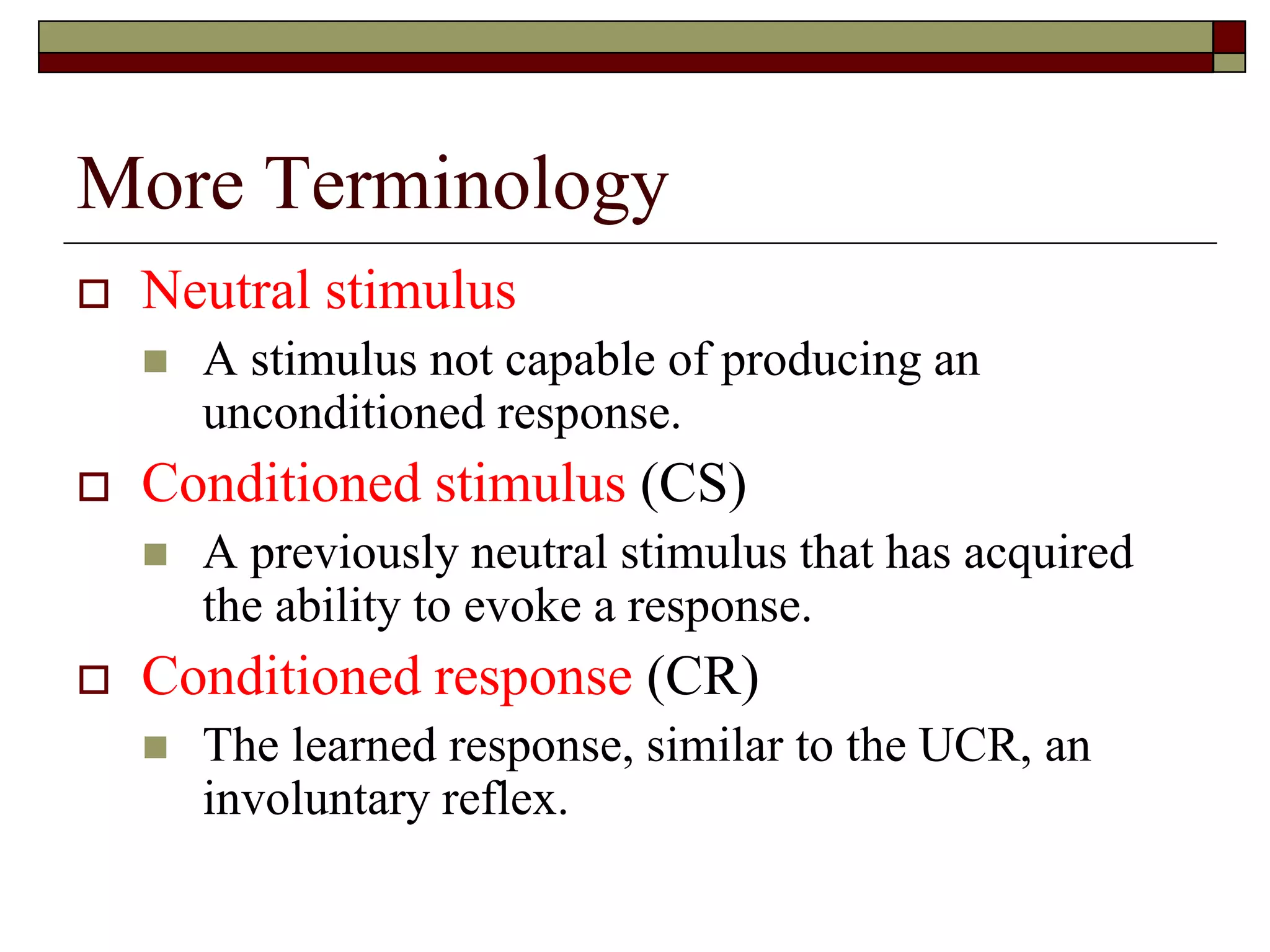Chapter 1 of the document introduces learning as an experiential process that leads to relatively permanent changes in behavior, discussing its definitions and limitations. It examines various behavioral theories, including functionalism and behaviorism, incorporating insights from figures like Thorndike and Pavlov on learning and conditioning. The chapter also addresses ethical considerations in learning research involving humans and animals.























